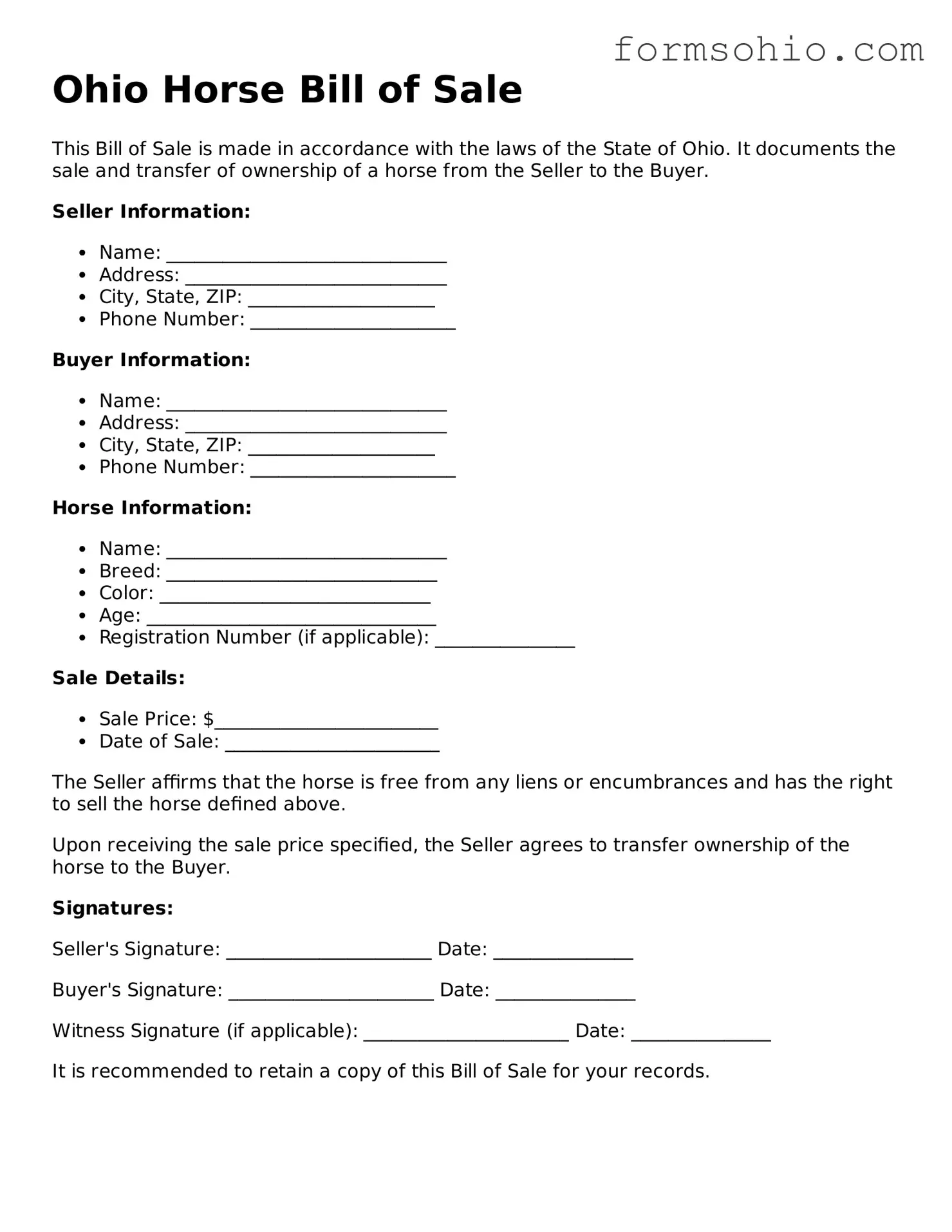When filling out the Ohio Horse Bill of Sale form, many individuals overlook important details. One common mistake is failing to include the seller's signature. Without this essential element, the document may not be legally binding. Always ensure that both parties sign the form before finalizing the sale.
Another frequent error involves incorrect or incomplete descriptions of the horse. Buyers need to know exactly what they are purchasing. Omitting details such as the horse's age, breed, color, and registration number can lead to misunderstandings later on. A thorough description is crucial for clarity.
Many people also neglect to include the purchase price. This information is vital for both parties and should be clearly stated in the document. Leaving it blank can create confusion and disputes regarding the transaction.
Not providing the date of the sale is another mistake that can complicate matters. The date serves as a reference point for the transaction and is important for record-keeping. Always double-check that the date is clearly marked on the form.
Some individuals forget to indicate whether the sale is as-is or if any warranties are provided. This distinction can significantly impact the buyer's expectations. Clearly stating the terms of the sale can prevent potential legal issues down the line.
Another common oversight is not including the buyer's information. Just as the seller's details are necessary, the buyer's name and contact information should also be clearly listed. This ensures that both parties have a record of who is involved in the transaction.
People sometimes fail to make copies of the completed bill of sale. Keeping a copy for personal records is essential. This document serves as proof of ownership and can be important for future reference.
Additionally, some individuals may not check for typos or errors before submitting the form. Simple mistakes can lead to significant complications. Taking the time to review the document carefully can save both parties from future headaches.
Lastly, individuals often overlook the importance of consulting with a legal professional if they have questions. While the form may seem straightforward, seeking advice can provide clarity and ensure that everything is filled out correctly.
By avoiding these common mistakes, individuals can ensure a smoother transaction and a more successful horse sale in Ohio.
